I thought it might be helpful for those considering gardening in SWCs if I posted my results.
First, a little background:
1. I am located in central Wisconsin, zone 4b. The 2009 growing season here has been brutal. A very cool spring prevented me from putting my plants out until June 6th. This was exasperated by a very dry spring and then a summer that was equally dry except for those periods when it rained for 3 days straight and was hot and humid before and afterward. This occurred about two times per month.
2. Because I am gone frequently during the summer, I set up automated watering system with a timer and drip irrigation set to come on twice a day for 15 minutes each time. This year, it was probably a godsend to have this since it was unusually hot and dry.
3. I used the double 3-gal and 5-gal bucket system since I can purchase them for 50 cents a piece locally. I used ½" PVC for the fill tubes (which I already had), 6 oz. yogurt cups or 24 oz. cottage cheese containers (which I already had) for the wicking basket that had slits cut along the sides. Better grade landscape fabric was laid in the bottom of the upper bucket to prevent excess potting mix from dropping into the reservoir bucket.
4. I started all my plants from seed, except for the strawberries which I obtained through a mail-order source.
5. Since I knew little to nothing about "soil-less" mixes or growing in containers, I opted to follow the information contained in Ed SmithÂs publication entitled Incredible Vegetables From Self-Watering Containers. The mix consisted of peat moss, perlite and compost. I added his recommended "food" of Blood Meal, Phosphate, Greensand and Azomite. I also added powdered egg shells to help prevent blossom-end rot.
6. I covered each container with a double layer of landscape grade weed mat and secured with butcherÂs twine which acted like a mulch cover.
7. At this point in the season, I am checking PH and soil moisture and have posted that information per plant. My meter registers moisture as 0-3.5=Dry; 3.5-7.5=Ideal; 7.5-10=Wet
The Plants:
Strawberries
Green Beans
Eggplant
Hot Peppers
Green Peppers
Zucchini
Watermelon
Cantaloupe
Tomatoes
Per plant results:
STRAWBERRIES (3-gal double SWCÂs with 5 plants per bucket)
In spite of their late start, with a little early pinching, the plants produced a small, sweet crop. They have quadrupled in size over this growing season and although they slowed production during the hottest months, they have gone into their 2nd full crop production for the fall. Very pleased with the taste of TriStar.
PH: Ideal  5.8-6.2 Actual - 7.5
Soil Mositure: 10+
Comments: The plants are doing exceptionally well, although I am disturbed by the excessive soil moisture. PH to be corrected next year since this level to too alkaline.
GREEN BEANS (5-gal double SWCÂs with 3 plants per bucket)
I planted two varieties, Improved Tendergreen and Bush Blue Lake and they are thriving! I think the Blue Lake are a bit sweeter and more tender than Tendergreen, but the production has been non-stop.
PH: Ideal  5.0-6.5 Actual - 6.5
Soil Moisture: 8
Comments: While the soil moisture is a bit high, the beans are doing very well.
EGGPLANT (5-gal double SWCÂs with 1 plant per bucket)
The plants have exceeded my expectations with production. I selected Rosa Bianca and it has been very prolific. Plants are very sturdy as well as beautiful to look at.
PH: Ideal  5.5-6.8 Actual - 7
Soil Moisture: 5
Comments: Eggplants DO seem very well suited to container growing, but PH will be adjusted next year.
HOT PEPPERS (5-gal double SWCÂs with 2 plants per bucket)
The Hungarian Hot Wax has been producing peppers as fast as I can pick them! Taste excellent.
PH: Ideal  5.5-7.5 Actual - 7
Soil Moisture: 6
GREEN PEPPERS (5-gal double SWCÂs with 1 plant per bucket)
California Wonder was a variety I grew many years ago in my in-ground garden and I was always pleased with it. It also seems to be very well suited to container growing. Each plant produced many medium to large sized peppers with a great taste.
PH: Ideal  5.5-7.5 Actual - 7
Soil Moisture: 8
Comments: Like eggplants, peppers do really well in containers. I think the moisture of the soil is too high although it hasnÂt created any issues with the plant as far as I can tell right now.
ZUCCHINI (5-gal double SWCÂs with 1 plant per bucket)
I am aware that there are some mini-varieties of zucchini that grow better in containers, I opted for Black Zucchini (another hold-over from the in-ground garden days.) I was amazed at how well it grew and how much it produced. Considering it is off the ground, you can easily see when the squash is ready to harvest and the taste was wonderful.
PH: Ideal  6.0-7.5 Actual - 7
Soil Moisture: 5
Comments: Unfortunately, the plant succumbed to powdery mildew and has stopped producing. I will be pulling this plant in the near future.
WATERMELON (5-gal double SWCÂs with 1 plant per bucket)
I hate to admit it, but I was skeptical of growing watermelons in containers. I only grew one as an experiment, but after pinching off lots of little ones, I have a single, nicely-sized melon that will be ready in the next two weeks.
PH: Ideal  6.0-6.8 Actual - 8
Soil Moisture: 5
Comments: I have no idea why the PH is 8. This will have to be corrected with next yearÂs planting. Like my zucchini, the watermelon has been touched with powdery mildew. IÂm hoping that it will hang on until the melon is ripe.
CANTALOUPE (5-gal double SWCÂs with 1 plant per bucket)
Another experiment, but this one was a bit tougher. I have two teeny-weeny melons hanging on for dear life as the plant tries to battle the powdery mildew. The melons are well formed and ÂnettedÂ, but considering their size, I doubt that they will be ripe before the whole plant collapses.
PH: Ideal  Higher than 6.3 Actual - 6.5
Soil Moisture: 7
TOMATOES (5-gal double SWCÂs with 1 plant per bucket)
This was the heartbreak for me. I planted Bloody Butcher, Marglobe, Bonny Best, Rutgers, Stupice and Tommy Toe; all indeterminate except for the Rutgers. None of my Bloody Butcher seedlings survived. Although none of the ripe tomatoes has blossom end rot, every plant was hit with early blight and sadly, I am just left to watch the plant decline with time. While the weather was a definite factor, I will claim most of the responsibility for the failure since I did not add lime to the mix (to counteract the acidity of the peat) nor feed the plants with any regularityÂdefinitely "my badÂ"
However, the plants are producing fruit and I have been harvesting regularly. The Tommy Toe has a nice flavor with balanced acid/sweet taste. The Stupice tomato has been smaller, but has a milder flavor. This variety also has green shoulders. Bonny Best (which showed some resistance to the blight early on) has produced fruit that has been mealy in texture and definitely not my favorite! IÂm still waiting on the Marglobe (which has nice, large fruit and ripening slowly!) and Rutgers, which is a late variety. I have not necessarily noticed a Âwatered-down taste with the tomatoes which has been discussed in this forum. But then again, IÂm just so darned tickled to be picking fresh tomatoes, I probably wouldnÂt have noticed anywayÂ;-)
While the PH on the tomatoes was a decent 6.5 (Ideal  6.4-6.8), I note that the soil moisture at 2" was only 2 and at the deepest level was 7. This confirms that with such a complex root structure, wicking upward against gravity is definitely an issue in keeping the plant sufficiently hydrated.
General Observations:
Fertilizing is definitely something I have to improve upon. In order to get good yields, I know I MUST feed the plants.
I had a lot of compaction of the soil-less mix. This was especially problematic with the tomato plants. In posting queries here, the general consensus seems to be that I should probably eliminate the compost next year.
I think that some of the planters would have done better without the mulch cover, tomatoes being one of them. Perhaps larger chunks of decorative bark would work out better.
Looking Ahead:
For the 2010 growing year, IÂm planning on expanding my container garden to include other vegetables that I didnÂt grow this year, including some root crops. Due to the problems with the tomatoes, IÂm thinking that they should be placed into shallower, but larger containers like the 10-gal Rubbermaid Totes. Considering that the inventor of the commercially market EB specifically designed it to accommodate two tomato plants (within its 29L x 14W x 11H outside dimensions) the success of plants grown in this sized container speaks to this containers ability to provide ample room for the root system as well as being able to deliver nutrients and hydration.
10-gal Rubbermaid Totes dimensions are 24L x 16W x 9H. Since the soil depth for the commercial EB unit is approx 8", using a dual 10-gal system for ONE plant may work just as well, if not better than the commercial EB.
For the record, I have had in-ground gardens for most of my life with just OK results. But due to the amount of work required, I never took much joy in gardening itself. This experiment with SWCÂs has introduced me to a whole new way of gardening that provides me with results that can be measured and improved upon a little at a time. This gives me GREAT joy!!! Although disease was a problem this season, weeds and garden pests were almost non-existent and due to the amazing number of bees the garden has attracted, IÂm inspired to add flowers next year.
All in all, I am pleased with the SWC's performance and would recommend them to anyone. I also want to state that I am happy to be a member of this forum and really appreciate everyoneÂs assistance and patience with me as I learn new things. I hope people who have not had much success with in-ground gardening will find my post helpful.
Donna H.


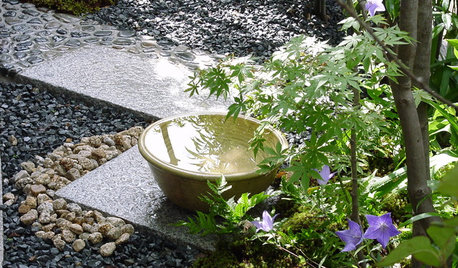

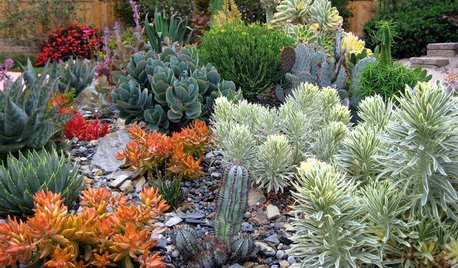

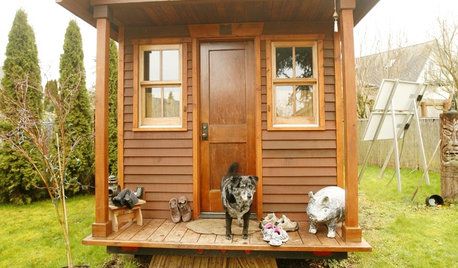
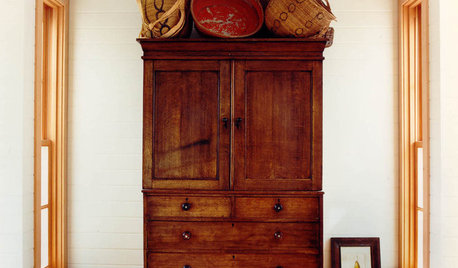
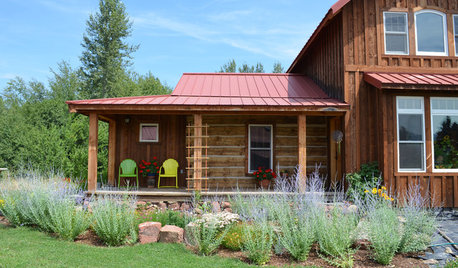






justaguy2
donna_hOriginal Author
Related Discussions
Complete Beginner, please help!
Q
my first swcs and sfg
Q
beginner first year flowers
Q
My tomatoes are getting too much water in my SWC.
Q
justaguy2
donna_hOriginal Author
emgardener
donna_hOriginal Author
justaguy2
donna_hOriginal Author
justaguy2
donna_hOriginal Author
emgardener
19juju54